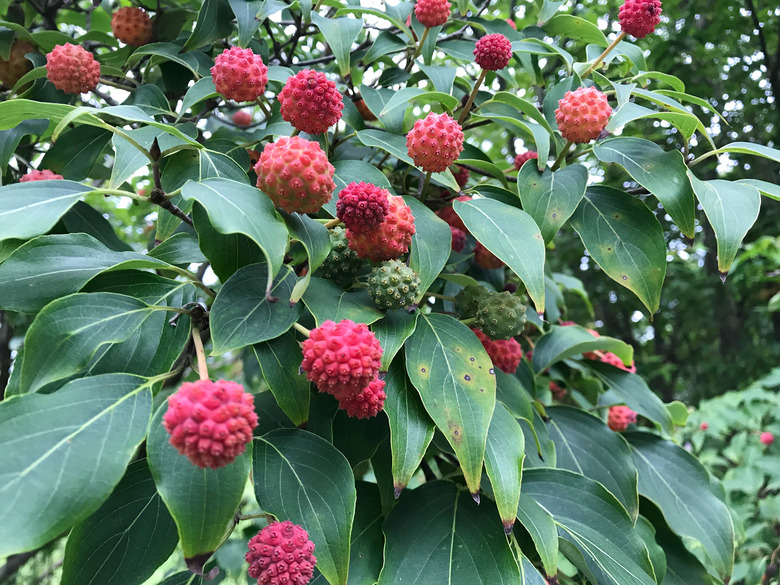What Dogwood Tree Has Red Berries?
We may receive a commission on purchases made from links.
Flowering dogwood (Cornus spp.) trees brighten spring and early-summer gardens with colorful bracts and flowers that include shades of white, pink, red and yellow. But you'll receive a double reward if your dogwood tree is one of the species that produces red berries after the flowers fade.
Tip
Flowering dogwood, Cornelian cherry dogwood, and some kousa dogwoods all produce red fruits after flowering.
Flowering Dogwood Has Red Berries
Flowering Dogwood Has Red Berries
Flowering dogwood (Cornus florida) is a native plant throughout its perennial range of U.S. Department of Agriculture plant hardiness zones 5 through 9. Brightly colored red fruits appear in clusters in late summer to fall. Although the fruits are toxic to people, they are prized by many birds, such as bluebirds, robins and cedar waxwings. You can plant only one tree to produce the fruit, because flowering dogwood has perfect flowers, meaning each flower can pollinate itself because it contains male and female reproductive parts. Commonly called berries, the fruits are botanically classified as drupes.
Some Kousa Dogwoods Have Berries
Some Kousa Dogwoods Have Berries
In USDA zones 5 through 8, kousa dogwood (Cornus kousa) bears showy, pinkish-red fruits that resemble raspberries. Although the taste doesn't rival that of its lookalike, the berries are edible. If you plant kousa dogwood as a fruit source for birds, steer away from the Stellar series, such as Stellar Pink (Cornus "Rutgan" Stellar Pink), which is a hybrid cross between flowering dogwood and kousa dogwood. Hardy in USDA zones 5 through 9, Stellar Pink is a sterile tree that doesn't bear flowers and cannot produce fruits.
Cornelian Cherry Has Edible Fruit
Cornelian Cherry Has Edible Fruit
Cornelian cherry dogwood (Cornus mas), also called Cornelian cherry or European cornel, is so-named because of its brilliant and edible cherry-red fruits. In USDA zones 4 through 8, cornelian cherry dogwood bears showy yellow flowers in spring, instead of the more recognizable white or pink bracts of flowering dogwood. Each berrylike fruit contains only one seed, compared to flowering dogwood, which may contain several seeds. If your newly planted cornelian cherry dogwood tree doesn't bear fruit, be patient — young seedlings produce only male flowers, but second- or third-year transplants begin growing perfect flowers, which can produce fruit.
Caring for Dogwoods
Caring for Dogwoods
Regardless of species, dogwoods perform best in sunny areas where they receive some afternoon shade. Trees are tolerant of varied soil types, but they must have well-drained soil. Kousa and cornelian cherry dogwoods are rarely bothered by pests and disease, which make them better choices than flowering dogwood for low-maintenance gardens. Because flowering dogwood bears toxic berries, plant this tree with caution in yards where curious children may mistake them for candy and eat them when they fall to the ground in late summer.
